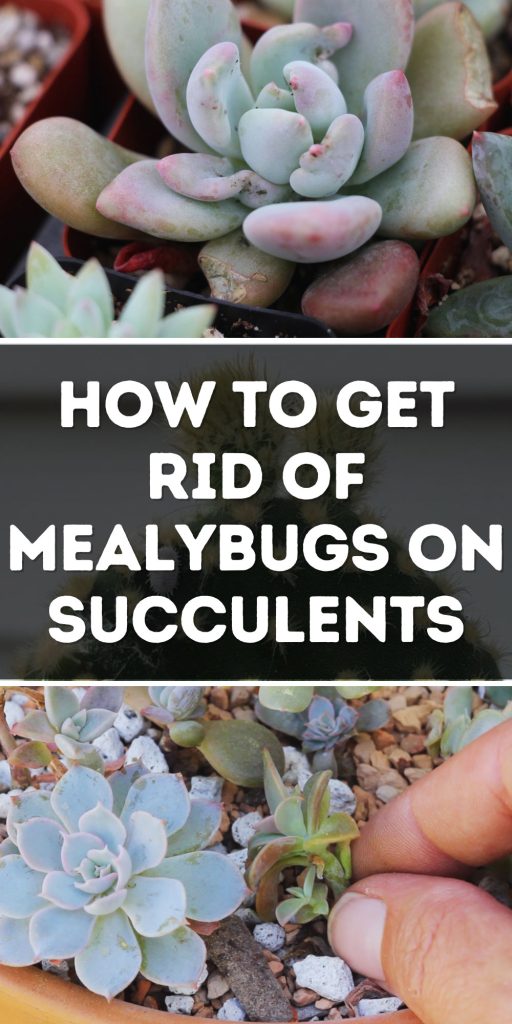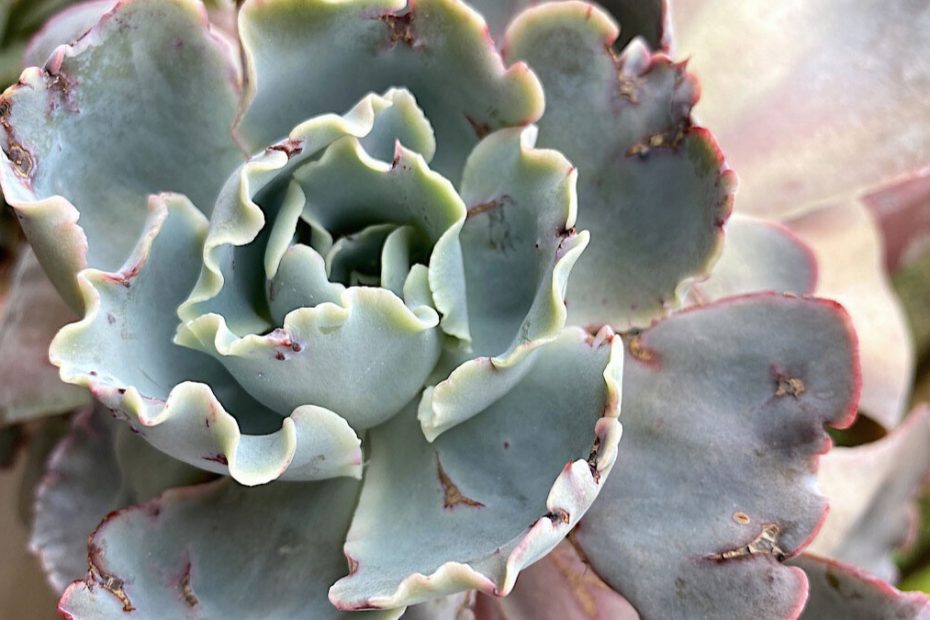If you’ve noticed white, cotton-like clusters on your succulents, you’re likely dealing with mealybugs. These pesky insects can weaken your plants, causing stunted growth and even death if left untreated. But don’t worry, getting rid of mealybugs is entirely possible with the right approach.
In this guide, you’ll discover effective methods to eliminate mealybugs from your succulents and prevent future infestations. Say goodbye to these unwelcome guests and keep your plants healthy and thriving. Let’s jump into the steps you need to take to protect your green beauties.
Key Takeaways
- Identify Mealybugs: Recognize mealybug infestations early by looking for white, cotton-like clusters and other signs such as sticky honeydew and plant decline.
- Regular Inspections: Frequently inspect your succulents, especially hidden areas like leaf joints and undersides, to catch and address mealybugs early.
- Preventative Measures: Employ proper watering techniques, quarantine new plants, and use natural remedies such as neem oil and rubbing alcohol to prevent infestations.
- Natural Remedies: Utilize neem oil, rubbing alcohol, and beneficial insects to naturally eradicate mealybugs without harsh chemicals.
- Chemical Treatments: When natural methods are insufficient, use insecticidal soaps and systemic insecticides to provide effective control and long-term protection.
- Long-term Maintenance: Consistently monitor your succulents and use preventative sprays to ensure lasting protection against mealybugs and maintain plant health.

Understanding Mealybugs
Mealybugs present a significant threat to succulents, often appearing as white, cotton-like clusters. Knowing how to identify and understand these pests is crucial for effective control.
What Are Mealybugs?
Mealybugs are sap-sucking insects that belong to the Pseudococcidae family. They typically infest indoor plants but can also affect outdoor succulents.
Characteristics:
- Appearance: Mealybugs are small, soft-bodied insects covered in a white, powdery wax.
- Lifecycle: They undergo several developmental stages from eggs to nymphs to adults.
- Habitat: Mealybugs thrive in warm, moist environments and can be found on plant stems, leaves, and roots.
Identifying Mealybug Infestations
Recognizing an infestation early can prevent significant damage to your succulents.
Signs:
- White Clusters: Mealybugs appear as fluffy white clusters on plants.
- Honeydew: They excrete a sticky substance called honeydew, which can lead to sooty mold.
- Plant Decline: Infested plants often exhibit yellowing leaves, stunted growth, and overall decline.
- Visual Inspection: Regularly check the undersides of leaves and plant crevices.
- Cotton Swab Test: Gently swipe a cotton swab dipped in alcohol over suspected areas to remove and kill mealybugs.
Understanding mealybugs and being able to identify their presence are the first steps to protecting your succulents.
Preventative Measures
Initiating preventative measures can safeguard your succulents from mealybugs. Being proactive is key to maintaining plant health and preventing infestations.
Regular Inspections
Frequently inspect your succulents to detect mealybugs early. Examine all parts of the plant, especially hidden areas like leaf joints and undersides.
- Frequency: Check once a week.
- Focus Areas: Leaf joints, undersides, and base of the plant.
- Tools: Use a magnifying glass for a closer look.
Proper Watering Techniques
Watering practices can impact mealybug infestations. Overwatering creates an inviting environment for these pests.
- Watering Schedule: Water succulents only when the soil is dry.
- Method: Use a watering can with a narrow spout for precise application.
- Drainage: Ensure pots have drainage holes to prevent water accumulation.
Quarantine New Plants
New plants can introduce mealybugs to your collection. Quarantining helps to control this risk.
- Duration: Isolate new plants for at least two weeks.
- Location: Place them in a separate area away from other plants.
- Observation: Check daily for any signs of pests.
Implementing these strategies can significantly reduce the risk of mealybug infestations, keeping your succulents healthy and vibrant.
Natural Remedies
Natural remedies can effectively combat mealybugs on succulents without using harsh chemicals. These methods offer an eco-friendly approach to keeping your plants healthy.
Using Neem Oil
Neem oil serves as a potent natural pesticide that targets mealybugs. Applied correctly, it disrupts their growth and reproduction.
Ingredients:
- Neem oil
- Water
- Liquid dish soap
Steps:
- Mix 1 teaspoon of neem oil with 1 quart of water.
- Add a few drops of liquid dish soap to help the mixture adhere to the plants.
- Pour the mixture into a spray bottle.
- Spray the affected areas thoroughly, focusing on hidden spots like leaf joints and undersides.
- Repeat every 7-14 days until the mealybugs are gone.
Neem oil works by interfering with the hormone systems of insects, preventing them from growing and breeding. Regular treatments keep your succulents free from mealybugs.
Applying Rubbing Alcohol
Rubbing alcohol, specifically isopropyl alcohol, eradicates mealybugs on contact by dissolving their protective waxy coating.
Ingredients:
- 70% isopropyl alcohol
- Cotton swabs or spray bottle
Steps:
- Dip a cotton swab in 70% isopropyl alcohol.
- Apply directly to the mealybugs, ensuring full coverage.
- Alternatively, fill a spray bottle with the alcohol and spray the infested areas.
- Check the plants regularly and re-apply as needed.
If used properly, rubbing alcohol won’t harm your succulents. This method is effective for small infestations.
Beneficial Insects
Certain beneficial insects prey on mealybugs, helping control infestations naturally. Introducing these predators can maintain a balanced ecosystem around your succulents.
Beneficial Insects:
- Ladybugs: These beetles consume mealybugs and other pests.
- Lacewings: Their larvae feed voraciously on mealybugs.
- Parasitic wasps: These tiny wasps lay eggs inside mealybugs, effectively killing them.
- Purchase beneficial insects from a reputable supplier.
- Release them near the infested plants during the early evening when it’s cooler.
- Ensure the environment supports the beneficial insects by avoiding broad-spectrum pesticides and providing adequate moisture.
Implementing these methods will help manage mealybug populations and protect your succulents naturally. Regularly monitor and maintain your plants to ensure lasting results.
Chemical Treatments
Using chemical treatments can effectively control mealybug infestations on succulents when natural remedies aren’t sufficient. These treatments target the pests directly and can provide long-lasting protection.
Insecticidal Soaps
Insecticidal soaps are a common solution for treating mealybug infestations. These soaps:
- Target: Mealybugs by breaking down their protective waxy coating.
- Ingredients: Potassium salts of fatty acids and water, making it safe for most plants.
- Application Frequency: Apply weekly until the infestation subsides.
To apply insecticidal soap:
- Mix the soap according to the product’s instructions.
- Spray the solution directly onto the affected areas, ensuring thorough coverage.
- Repeat the process every 7 days until no signs of mealybugs remain.
Systemic Insecticides
Systemic insecticides are absorbed by the plant and target pests from within. This method ensures long-term protection and can be more effective for severe infestations. Systemic insecticides:
- Mode of Action: Absorbed through roots or leaves and distributed throughout the plant.
- Duration: Provides longer-lasting protection compared to topical treatments.
- Target Pests: Effective against mealybugs and other sap-sucking insects.
For using systemic insecticides:
- Choose a product labeled for use on succulents and indoor plants.
- Follow the manufacturer’s instructions for dilution and application.
- Apply the solution to the soil or spray it on the plant.
- Monitor for signs of pest activity and reapply as required, typically every 2-3 months.
Using chemical treatments alongside natural methods ensures comprehensive protection for your succulents, keeping them vibrant and healthy.
Long-term Maintenance
To balance between ongoing succulent health and mealybug prevention, long-term maintenance is crucial. Employ regular monitoring and preventative measures to ensure your succulents remain pest-free. Consistent practices significantly reduce the possibility of future infestations.
Monitoring After Treatment
Regular monitoring is essential after initial mealybug treatments. Weekly inspections help identify any resurgence early.
- Inspection Frequency: Examine plants once a week.
- Inspection Areas: Focus on leaf joints, undersides, and base of the plant.
- Tools: Use a magnifying glass for deeper inspection.
If you spot mealybugs, act immediately. Remove visible bugs with a cotton swab dipped in rubbing alcohol.
Preventative Sprays
Preventative sprays create a protective barrier, minimizing the chances of reinfestation. Use these sprays on a regular schedule.
- Neem Oil Solution: Combine neem oil, water, and a small amount of liquid dish soap. Spray every two weeks.
- Insecticidal Soaps: Safe for plants, these soaps break down mealybugs’ protective coating. Apply every three weeks.
Both treatments work best when alternated to prevent mealybugs from building resistance.
By incorporating these long-term maintenance strategies, you can keep your succulents healthy and mealybug-free.
Conclusion
Maintaining healthy succulents free from mealybugs is achievable with consistent care and vigilance. By regularly inspecting your plants, using proper watering techniques, and quarantining new additions, you can effectively prevent infestations. Natural remedies like neem oil and rubbing alcohol, along with beneficial insects, offer eco-friendly solutions for managing these pests.
For severe cases, combining natural methods with chemical treatments like insecticidal soaps and systemic insecticides ensures comprehensive protection. Long-term maintenance, including weekly inspections and preventative sprays, is essential for keeping your succulents vibrant and mealybug-free. With these strategies, you can enjoy thriving, healthy plants.
Frequently Asked Questions
What are mealybugs, and how do they affect succulents?
Mealybugs are sap-sucking insects from the Pseudococcidae family. They appear as white, cotton-like clusters on succulents and can stunt their growth or cause death if not controlled.
How can I identify a mealybug infestation on my succulents?
Signs of a mealybug infestation include the presence of white clusters, honeydew excretion, and general plant decline. Regular inspections, especially of leaf joints and undersides, can help in early detection.
Can mealybugs infest outdoor succulents, or are they only an indoor problem?
While mealybugs typically infest indoor plants, they can also affect outdoor succulents, especially if the environment is warm and moist.
What preventive measures can I take to protect my succulents from mealybugs?
Preventative measures include regular inspections, proper watering techniques (avoid overwatering), ensuring pots have drainage holes, and quarantining new plants for at least two weeks.
What natural remedies are effective for eliminating mealybugs?
Effective natural remedies include neem oil and rubbing alcohol. Neem oil disrupts mealybug growth and reproduction, while rubbing alcohol dissolves their protective waxy coating.
Are there beneficial insects that can help control mealybug infestations?
Yes, beneficial insects like ladybugs and lacewings prey on mealybugs and help control their population naturally.
When should I consider using chemical treatments for mealybug infestations?
Consider chemical treatments when natural remedies are insufficient. Options include insecticidal soaps and systemic insecticides, which offer long-lasting protection.
How often should I inspect my succulents for mealybugs?
Weekly inspections are recommended. Focus on leaf joints, undersides, and the base of the plant, using a magnifying glass for thorough checks.
What should I do if I spot mealybugs during an inspection?
If you spot mealybugs, remove them immediately using a cotton swab dipped in rubbing alcohol. Immediate action can prevent the infestation from spreading.
Is it necessary to use both natural remedies and chemical treatments?
Using both natural remedies and chemical treatments can provide comprehensive protection for succulents, ensuring they remain healthy and vibrant.
How can I maintain long-term succulent health to prevent mealybug infestations?
Long-term maintenance includes regular monitoring, using preventative sprays like neem oil, and taking immediate action if mealybugs are detected. Regular inspections and proper care routines are crucial.
